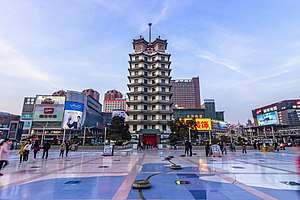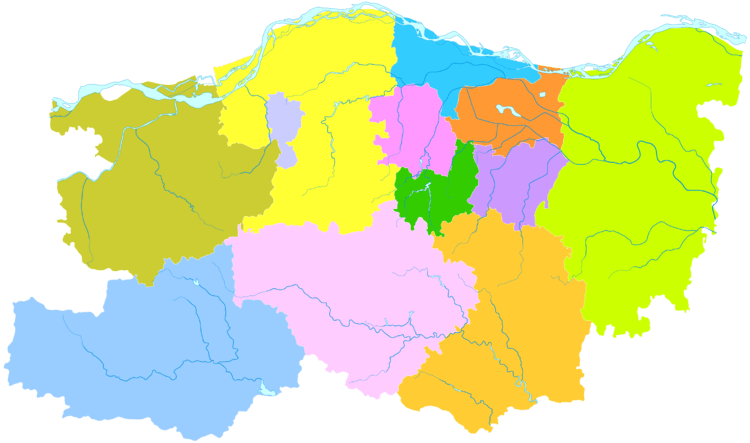Zhengdong New Area
Zhengdong New Area (simplified Chinese: 郑东新区; traditional Chinese: 鄭東新區; pinyin: Zhèngdōng Xīn Qū) is a district of Zhengzhou, Henan province, People's Republic of China. It covers an area of 260 square kilometres (100 sq mi),[1] and is expected to expand to 500 square kilometres (193 sq mi) and a population of 5 million by 2020.[2]
Zhengdong New Area 郑东新区 | |
|---|---|
 Zhengdong CBD | |
 Zhengdong Location in Henan | |
| Coordinates (Zhengdong New Area administrative committee): 34°46′31″N 113°44′04″E | |
| Country | People's Republic of China |
| Province | Henan |
| Prefecture-level city | Zhengzhou |
| Area | |
| • Total | 260 km2 (100 sq mi) |
| Population (2013) | |
| • Total | 1,570 |
| • Density | 6.0/km2 (16/sq mi) |
| Time zone | UTC+8 (China Standard Time) |
| Postal code | 450008 |
| Area code(s) | 0371 |
| Website | www |
In 2001, the city government commissioned Japanese architect Kisho Kurokawa to draw up a comprehensive urban plan for Zhengdong.[2] Zhengdong New Area consists of the core CBD area, core living area, Longhu area (龙湖; 'dragon lake'), and Longzihu (Longzi Lake) college district.
When sections of the new area opened in 2011, it was criticized by American media, and 60 Minutes released a documentary about Zhengdong New Area, claiming it was the largest ghost city on earth.[3] Over time, several regional headquarters of banks moved in and the area has begun to fill up with residents.[4][5][6] By 2016, the area had a population of over 1 million residents and became the financial hub of Henan Province.[7] A metro line serving the area opened in 2013, two more lines connecting the Zhengdong with urban Zhengzhou are under construction.
Office Buildings
Zhengdong New Area is home to some highest skyscrapers in Zhengzhou, including the following:
References
- "Outline of Zhengdong" (in Chinese). Administrative Committee of Zhengdong New Area. 2 February 2015. Retrieved 15 December 2015.
- Browne, Andrew (September 15, 2006), "Growing Pains: Booming Municipalities Defy China's Effort to Cool Economy; Hyper-Investment a Worry; A Monumental Pagoda For Once-Sleepy Zhengzhou; Satellites Spying on Bulldozers", The Wall Street Journal
- "Banishing the ghost". Retrieved 2016-08-21.
- (www.dw.com), Deutsche Welle. "What has become of China's ghost cities? | Asia | DW | 25.11.2016". DW.COM. Retrieved 2017-11-08.
- "A Journey to Zhengdong, China's Largest Ghost City". www.vagabondjourney.com. Retrieved 2019-02-09.
- Cox (27 March 2011), Zhengzhou Ghost City Alive!
- "China's growth breathes new life into old ghost towns". Retrieved 2019-02-09.

